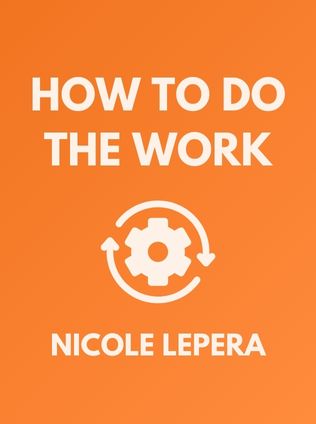
How to Do the Work
Recognize Your Patterns, Heal from Your Past, and Create Your Self
By Nicole LePera
Published 03/2021
About the Author
Nicole LePera, widely recognized as "The Holistic Psychologist," is a trailblazer in the field of self-healing and psychological well-being. She holds a doctorate in Clinical Psychology from The New School in New York City and is trained in various disciplines, including clinical psychology, trauma, and mindfulness-based cognitive therapy. LePera's approach is unique; she merges traditional psychological practices with a holistic perspective, emphasizing the interconnectedness of mind, body, and spirit. This comprehensive approach to mental health has garnered her a massive following on social media, where she shares insights, tools, and practices designed to empower individuals to take control of their healing journeys.
LePera's book, "How to Do the Work," is a culmination of her research, clinical experience, and personal journey. It is a powerful guide that encourages readers to break free from self-sabotaging patterns and embrace a path toward holistic wellness. LePera’s work is grounded in the belief that everyone has the capacity to heal themselves if they are provided with the right tools and knowledge.
Main Idea
The central thesis of "How to Do the Work" revolves around the idea that many of the struggles people face in their adult lives—whether emotional, relational, or physical—are rooted in unresolved childhood trauma and conditioned patterns of behavior. LePera argues that these self-sabotaging patterns, which manifest in various forms such as procrastination, chronic anxiety, and toxic relationships, are not consciously chosen. Instead, they are automatic responses developed as coping mechanisms during childhood. To break free from these patterns and live a healthier, more fulfilling life, LePera advocates for a process of conscious self-awareness and intentional healing.
The book is structured around a comprehensive guide to self-healing, exploring how childhood experiences shape our subconscious beliefs and behaviors, the impact of these patterns on our adult lives, and a practical, step-by-step plan to overcome them. LePera emphasizes that healing is a lifelong journey, one that requires daily commitment and self-compassion.
Table of Contents
- Introduction: The Path to Self-Healing
- Understanding the Mind-Body Connection
- Identifying Self-Sabotaging Patterns
- The Role of Childhood Trauma
- How Conditioning Shapes Your Beliefs
- Breaking the Cycle: The Power of Conscious Awareness
- Embracing New Patterns: A Five-Step Plan
- Mindfulness and Self-Care Practices
- The Journey Continues: Embracing Lifelong Healing
Understanding the Mind-Body Connection
LePera begins by laying the foundation for her holistic approach to healing. She emphasizes the mind-body connection, a concept that is central to understanding how emotional and psychological distress can manifest as physical symptoms. According to LePera, the body is a storehouse of all our experiences, particularly those that are traumatic or unresolved. This is why people often experience physical symptoms such as chronic pain, fatigue, or digestive issues when they are emotionally distressed.
LePera draws on the work of pioneering figures like Dr. Bessel van der Kolk, author of "The Body Keeps the Score," who highlights the ways in which trauma is stored in the body. She argues that to heal fully, one must address both the psychological and physical aspects of their trauma. LePera explains,
"The body and mind are not separate; they are two parts of the same whole. When we treat them as such, we can begin to heal at a deeper level."
She illustrates this concept with examples of how emotions like fear or anger can trigger physiological responses:
- Fear: Often manifests as a tightness in the chest, shortness of breath, or an upset stomach.
- Anger: Can lead to muscle tension, headaches, and increased heart rate.
- Stress: Frequently results in chronic fatigue, digestive issues, or compromised immune function.
Sign up for FREE and get access to 1,400+ books summaries.
You May Also Like
The Subtle Art of Not Giving a F*ck
A Counterintuitive Approach to Living a Good Life
By Mark MansonRich Dad Poor Dad
What the Rich Teach Their Kids About Money - That the Poor and Middle Class Do Not!
By Robert T. KiyosakiHow To Win Friends and Influence People
The All-Time Classic Manual Of People Skills
By Dale CarnegieFreakonomics
A Rogue Economist Explores the Hidden Side of Everything
By Steven D. Levitt and Stephen J. Dubner



















